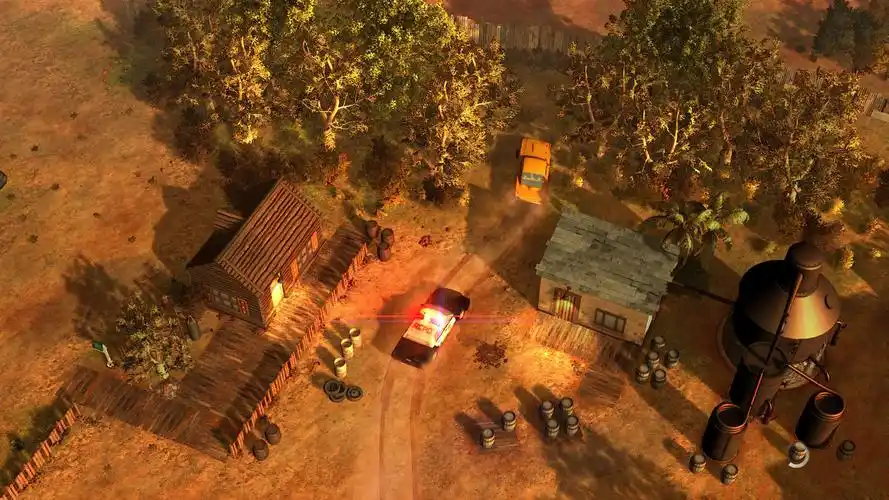Title: Biologist Simulator VR: Study Missions Update Transforms Virtual Fieldwork
The landscape of educational technology is rapidly evolving, and at the forefront of this revolution is Biologist Simulator VR, a groundbreaking application that transports users from their living rooms into hyper-realistic, dynamic ecosystems. The recently launched Study Missions Update is not merely a content patch; it is a fundamental reimagining of how we approach virtual scientific inquiry, adding layers of structured pedagogy, nuanced discovery, and collaborative problem-solving that blur the line between simulated and actual fieldwork.
Beyond Sightseeing: The Pedagogy of Structured Learning
Previous iterations of nature-based VR excelled at wonder and exploration—allowing users to marvel at a digital savannah or a coral reef. The Study Missions Update shifts the core objective from observation to application. It introduces a new mission system, designed by a panel of practicing biologists and educators, that structures the learning experience into progressive tiers of complexity.
New users begin with "Introductory Surveys," which function as interactive tutorials. A mission might task you with identifying and cataloging five different plant species in a temperate rainforest using a new in-game digital field guide. This isn’t a simple point-and-click exercise. The VR mechanics require you to physically lean in, examine leaf patterns, bark texture, and even take virtual soil samples, thereby cementing knowledge through kinesthetic learning.
As players advance, they encounter "Advanced Investigations." These missions present players with authentic ecological problems. You might receive a mission brief stating that a population of virtual frogs in a wetland biome is declining. Your task is to form a hypothesis. Is it a fungal infection? A pollutant in the water? A change in the insect population they feed on? You must use a suite of new tools—water testing kits, audio scanners for frog calls, and microscopes for tissue analysis—to collect and synthesize data, ultimately diagnosing the issue and proposing a virtual conservation strategy.
The Tools of the Trade: A Digital Field Kit
The update brings a full suite of biologist tools, each with realistic physics and interactive mechanics. The inventory now includes:
- Environmental Sensor: A multi-tool that measures real-time virtual data for temperature, humidity, pH levels, and light intensity.
- Specimen Collector: Allows for ethical, virtual collection of plant clippings, water samples, and insect specimens for further analysis in the…
- Mobile Lab Station: A new interactive workspace that can be deployed in the field. Here, you can place samples under a functional microscope, run chemical tests, and analyze DNA sequences in a simplified but scientifically accurate minigame. This crucial addition closes the loop between data collection and data analysis, a core tenet of the scientific method.
The Thrill of Discovery: Introducing Procedural Mysteries
A flagship feature of the Study Missions Update is the "Procedural Mystery" system. Once a week, the game's servers generate a unique, randomized ecological event within its shared world. Players might log in to find a notification about unusual algal blooms in a specific lake or atypical migratory patterns in a bird species.

These are not pre-scripted events. The cause is determined by a complex algorithm, meaning even the developers don't know the exact answer. Players must self-organize, share findings on the in-game research board, and collaborate to pinpoint the cause. This creates a powerful, emergent gameplay loop that mirrors the collaborative and often unpredictable nature of real-world scientific research. Did a nearby virtual factory leak nutrients? Was it an unseasonal temperature shift? The community must work together to find out, fostering a genuine sense of shared purpose and discovery.
Collaborative Research: The Multiplayer Lab
While previous versions allowed shared exploration, the update deeply integrates multiplayer into the scientific process. The new "Collaborative Research" mission type requires a team of up to four biologists, each specializing in a different area (e.g., botany, microbiology, zoology). One player might be tasked with tracking animal movements, another with analyzing scat samples, while a third identifies changes in flora.
Success depends on constant communication and data sharing. A zoologist’s observation of a sick animal is meaningless without the microbiologist’s identification of a pathogen from a water sample collected by the team's ecologist. This teaches the invaluable lesson that modern biology is rarely a solitary pursuit; it is a symphony of interdisciplinary collaboration.
A New Standard for Educational VR
The Study Missions Update for Biologist Simulator VR represents a quantum leap for the genre. It moves beyond the novelty of VR presence and tackles the harder, more rewarding challenge of simulating the intellectual and practical processes of science itself. It’s no longer just about seeing nature; it’s about understanding it, questioning it, and ultimately, working to protect it. By gamifying the scientific method—hypothesis, experimentation, analysis, and conclusion—it doesn’t just teach biological facts; it cultivates a biological mindset, training the next generation of scientists and nature enthusiasts in the most immersive classroom ever built.

















